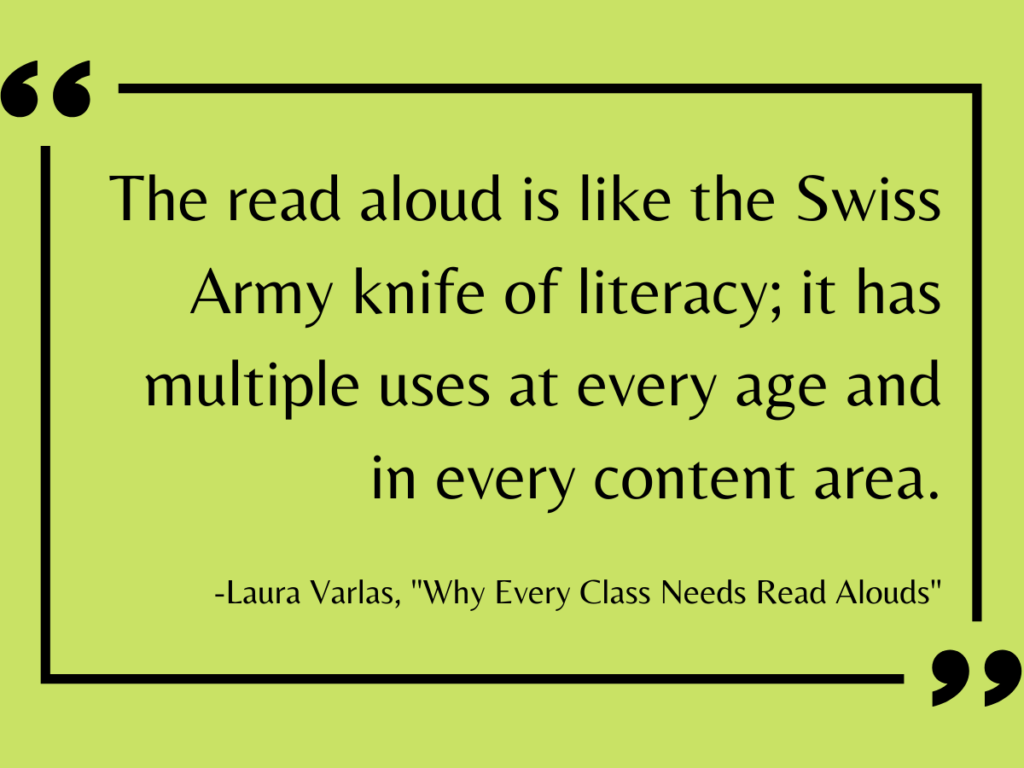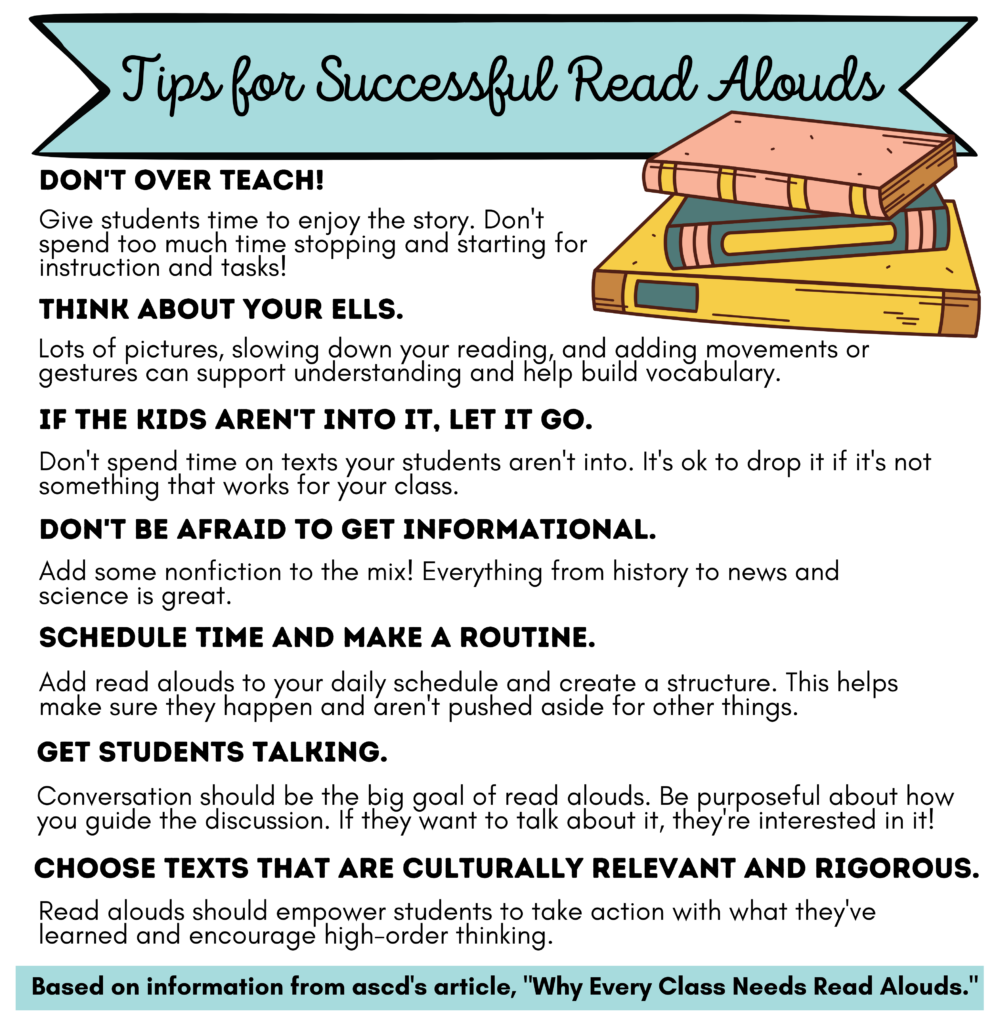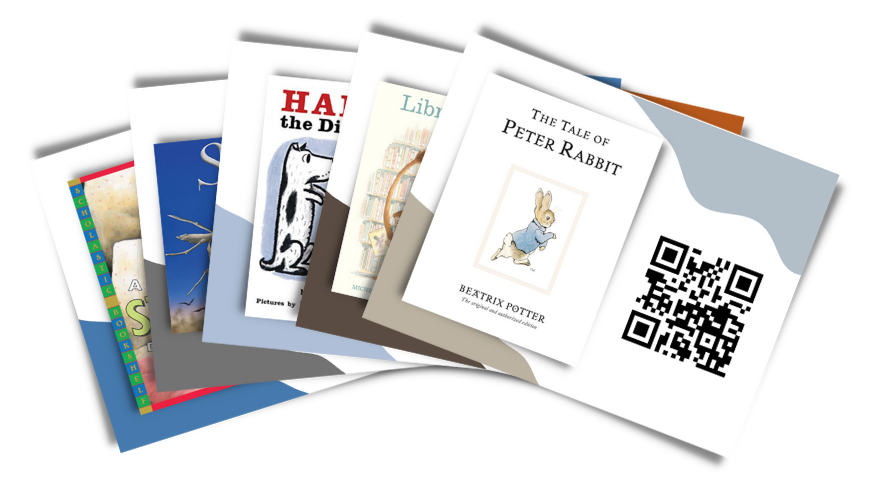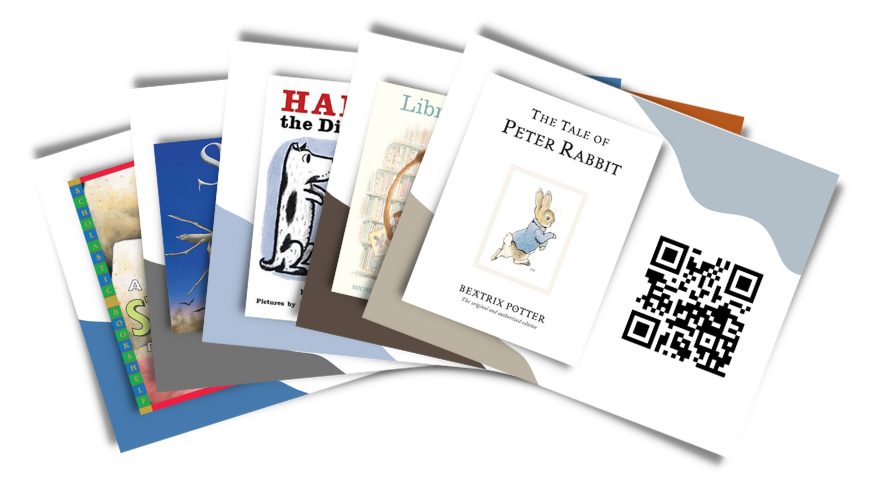Storyline Online has always been one of my favorites. At present, this site, created by the SAG-AFTRA Foundation, has 68 read alouds in its collection– read by everyone from Seth Meyers to Allison Janney to Michelle Yeoh to Dulé Hill and more. Not only that, it has a free activity guide for each book! These teacher guides are based on the Common Core State Standards, but, be not dismayed; they are translatable to the ELAR TEKS. Today, I want to share all 68 read alouds as QR codes that you can use in your classroom– for FREE! (Who doesn’t like free? I personally love free.)
Why Are Read Alouds Important?
Read alouds are important for a variety of reasons. According to Reading Rockets (and many, many other sources), “Reading aloud is one of the most important things parents and teachers can do with children. Reading aloud builds many important foundational skills, introduces vocabulary, provides a model of fluent, expressive reading, and helps children recognize what reading for pleasure is all about.” That’s it in a nutshell, right there! It is a critical component of building the foundational reading and vocabulary skills necessary for fluent reading and good reading comprehension. Boom.

Tips for Successful Read Alouds
In ASCD’S fantastic article “Why Every Class Needs Read Alouds,” Pernille Ripp, Regie Routman, Barbara Moss, Tanya Friedman, and Valentina Gonzolez offer some great tips:
- Don’t over teach! Stopping with too many instructional-related tasks will cause students to lose interest. Read the book in advance and plan your stops strategically, but give students the time to enjoy it.
- Think about your English Language Learners (ELLs). Pictures, slowing down your reading, and adding movements or gestures can support understanding and help build vocabulary.
- If the kids aren’t into it, let it go. Don’t spend time on texts your students aren’t into. It’s ok to drop it if it’s not something that works for your class.
- Don’t be afraid to get informational. Students love to read about what’s happening in the world around them. Add nonfiction to the mix– everything from history to news and science is great.
- Create a structure or routine. Build read alouds into your daily schedule and make a routine. Time is scarce, but planning for read alouds will keep them from getting nixed and replaced with other things.
- Get students talking. Choose your texts with conversation in mind. If students are wanting to talk about it, they’re interested in it.
- Choose texts that are “culturally relevant and rigorous.” According to ASCD’s article, “A culturally relevant read aloud creates a self-propelling cycle of engagement where students not only want to learn more, but also want to do something with their new knowledge.” I could not agree more. What high-order thinking does the read aloud instigate? What do students already know about the content, and how does it relate to them?

Ways to Use the Read Aloud Cards
So can Wanda Sykes, Chris Pine, or Connie Britton follow this advice and host an adaptive read aloud through their Storyline Online video? Nope. Then how can you use these read alouds in meaningful ways? Here are some ideas based on reinforcement, extension, and enrichment:
- Classroom library. Students can revisit texts you’ve already read in class or discover new ones. Rotate which books you highlight in your class library by switching out the cards regularly.
- Read aloud center. Give students the chance to listen to reading in a class center.
- English Language Learners (ELLs). ELL students can benefit from revisiting texts and having access to audiobooks.
- Interacting with characters. Use images from the book to make stick puppets. Place them with the read aloud cards so that students can interact with the characters as they are listening and watching.
- Sequencing. As they hear the story, students can put images from the book in order to sequence it! They’ll love this.
- Retelling. After the student listens to the read aloud independently, ask them to retell the story. You can use a retelling rubric to help you assess their understanding. You can use the images from the book and/or the stick puppets to support students who may need it.
- Early finishers. When a student finishes early, let them grab a read aloud! Pair it with a writing prompt for some additional enrichment or extension.
- Vocabulary reinforcement. Give students access to read alouds that will reinforce specific vocabulary you’ve taught in class.
- Paired Reading. Make a read aloud available that pairs well with a text you’ve recently read in class. Put some visuals up that encourage students to make comparisons between the books. Or have them complete a KWL chart to activate prior knowledge from their previous reading.

I hope you enjoy using these read aloud cards and find them useful for your students. If you have any additional ideas for how they can be used, please let me know in the comments. I always love to hear from you.



15 comments
Love this! Planning to use it ASAP. Thank you.
Wonderful!! I’m so glad.
Do they have them in Spanish?
Hi there, Melinda,
Storyline Online just has one in Spanish right now, but I will be posting Spanish QR code read alouds for everyone in May!
Here you go, Melinda! https://blog.tcea.org/28-qr-codes-spanish/
THANK YOU
Glad you find them helpful. 🙂
THANKS
Glad you can use them!!
It would be pretty cool to have these for older students too. High school even. Everyone loves read alouds, and given the poor reading performance of most students today, they need them!
Hi Melissa! Great idea! What are some examples of what you’d like to see?
Hi Emily, I know some have been added since you made these. Can you share the template you used or where it is from so I can make the new ones and they match. Pretty Please!!! My district has now blocked School Tube so I need to make a new QR for each one anyway:-(
Hi Kathy, Here is a template link for you! 🙂
Hello
Our 501 C3 organization is building an inner city pocket park for reading. I would like to use the QR codes in the park. I would like to speak with you about this. Ruth Mays for Restoreu Inc
Please email lgracey@tcea.org. Thank you!